
by Emma Marotte, Biologist, Fisheries and Oceans Canada, Bedford Institute of Oceanography, Dartmouth, Nova Scotia, Canada
August 28, 2019
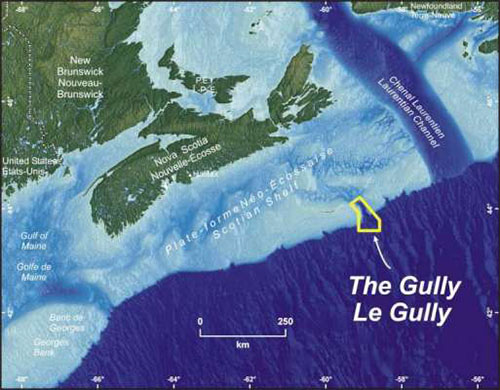
Location of The Gully Marine Protected Area. Image courtesy of Fisheries and Oceans Canada. Download larger version (jpg, 142 KB).
Two hundred kilometers (~125 miles) off Nova Scotia, Canada, lies one of the most unique and diverse marine ecosystems in the Northwest Atlantic Ocean. Known as the Gully, this undersea canyon was formed by the movement of melting glaciers thousands of years ago. Plunging down more than 3,000 meters (~9,843 feet) in its deepest parts, the Gully stretches 65 kilometers (~40 miles) in length and 16 kilometers (~10 miles) in width, forming the largest underwater canyon in Canadian waters. From seabirds to whales, mysterious deep-sea fish to corals, the Gully is home to an astonishing level of biodiversity.
Highlights from the first dive of the expedition, exploring the Gully Marine Protected Area. During the dive, we encountered a stunningly diverse and dense array of marine life, providing greater insights into this protected submarine canyon. Video courtesy of the NOAA Office of Ocean Exploration and Research, Deep Connections 2019. Download larger version (mp4, 85.3 MB).
The great variety of marine life in the Gully has long fascinated scientists, leading to many research expeditions over the past few decades. Dr. Hal Whitehead and his team from Dalhousie University have been in the Gully for 30 years studying the endangered Scotian Shelf population of northern bottlenose whales. These whales live there year-round feeding on their favorite prey, squid!
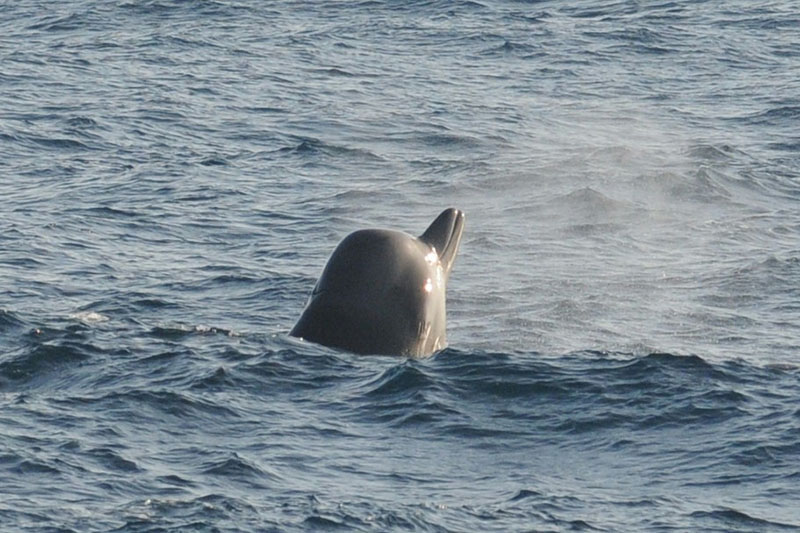
Northern bottlenose whale in the Gully Marine Protected Area. Image courtesy of Fisheries and Oceans Canada. Download larger version (jpg, 354 KB).
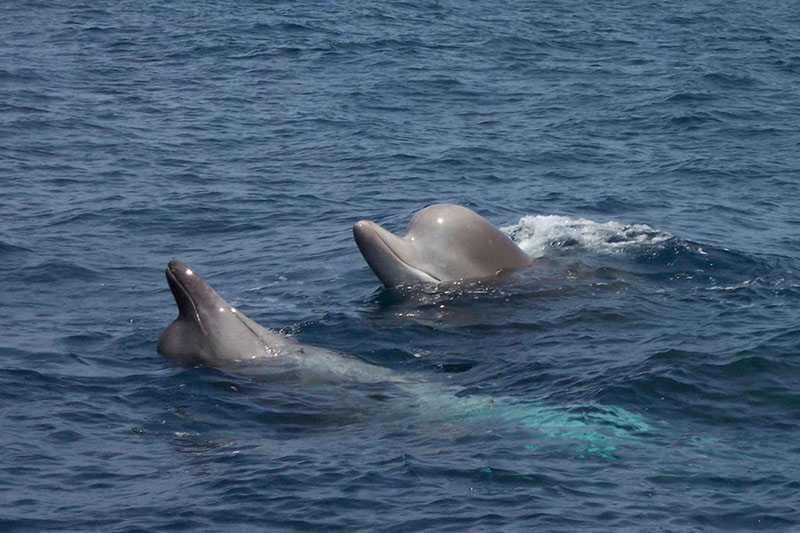
Two northern bottlenose whales swimming in the water. Image courtesy of Fisheries and Oceans Canada. Download larger version (jpg, 302 KB).
Research done at Fisheries and Oceans Canada (DFO) has helped to advance our knowledge of the Gully ecosystem. Dr. Hilary Moors-Murphy has been using passive acoustic monitoring devices on the seafloor to listen for whales in the Gully and throughout the Scotian Shelf. These recorders provide information on how different whale species use the ocean. She and others were recently able to show that endangered blue whales are present in Atlantic Canadian waters in summer and winter, including in the Gully.
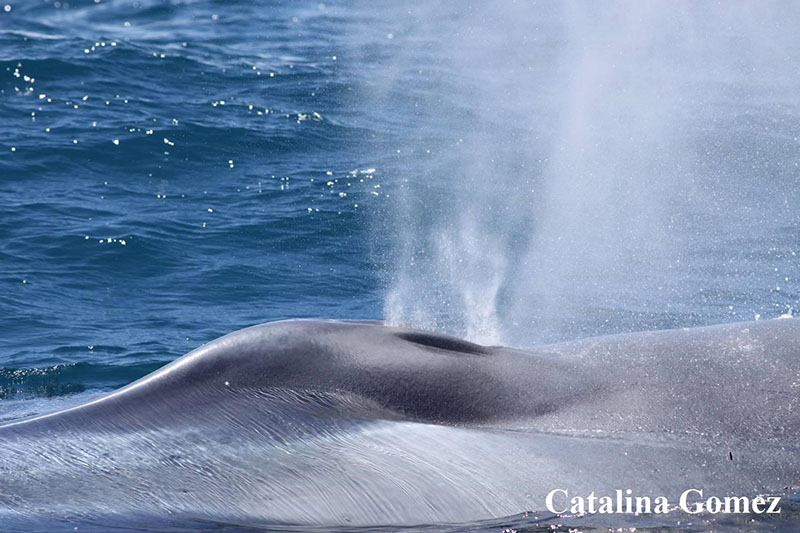
Blow from a blue whale. Image courtesy of Fisheries and Oceans Canada. Download larger version (jpg, 423 KB).
The Gully isn’t just important for whales; an abundance of mesopelagic and benthic organisms can be found there as well. Dr. Ellen Kenchington and Lindsay Beazley , benthic ecologists with DFO, study the Gully and have documented the occurrence of many different species of fish, corals, and sponges and have highlighted the importance of this underwater canyon as a hotspot for these species.
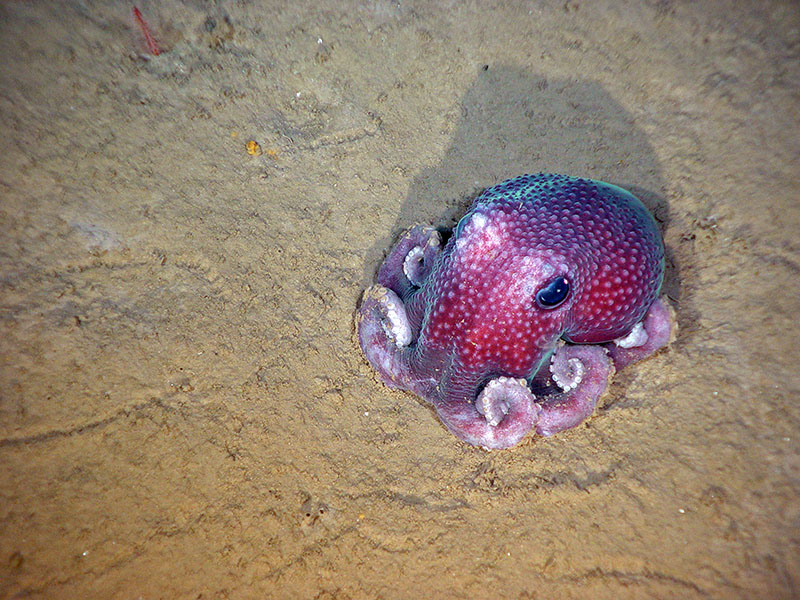
Deep-sea octopus resting on the seafloor. Image courtesy of Fisheries and Oceans Canada. Download larger version (jpg, 5 MB).
The unique habitat of the Gully and the amazing array of marine species that it supports contributed to its establishment as a marine protected area (MPA) in 2004 . MPAs play an important role in managing our ocean space as they protect unique places and serve as natural laboratories for ecosystem monitoring and in-depth scientific research. Initial conservation interest was aimed at protecting the home of the resident population of northern bottlenose whales. It quickly became apparent that the Gully MPA protects a vast array of marine life, including many pelagic and benthic species, such as highly sensitive deep-sea corals and sponges. In fact, the Gully was the first MPA established in the Atlantic under the federal Oceans Act. Since its designation, the Gully has been collaboratively managed by DFO, other regulators, and a multi-stakeholder advisory committee who help oversee ongoing activities and work towards the Gully’s continued preservation. This year marks an especially important milestone, as it is now 15 years since the Gully was officially designated as an MPA.
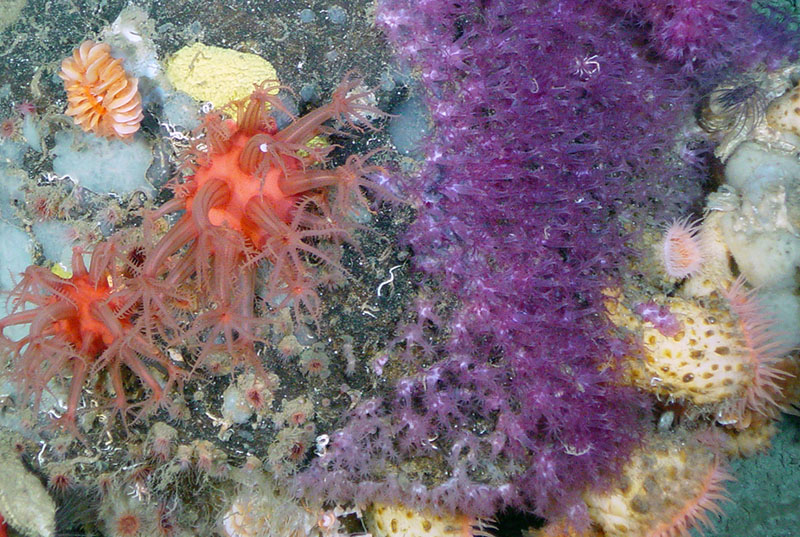
Underwater habitat in the Gully Marine Protected Area. Image courtesy of Fisheries and Oceans Canada. Download larger version (jpg, 2.1 MB).
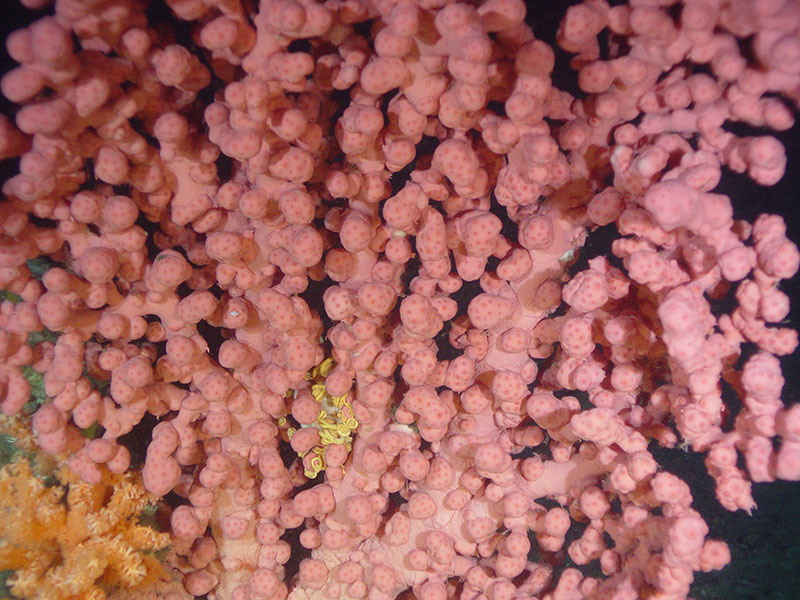
Deep-sea coral. Image courtesy of Fisheries and Oceans Canada. Download larger version (jpg, 3 MB).
Yet, even after decades of research in the Gully, many unanswered questions remain, making it a place of great interest for exploration, research, monitoring, and conservation efforts. The Deep Connections 2019 expedition aboard NOAA Ship Okeanos Explorer offers a valuable chance for scientists to gain more insight and information on the mysterious Gully ecosystem.